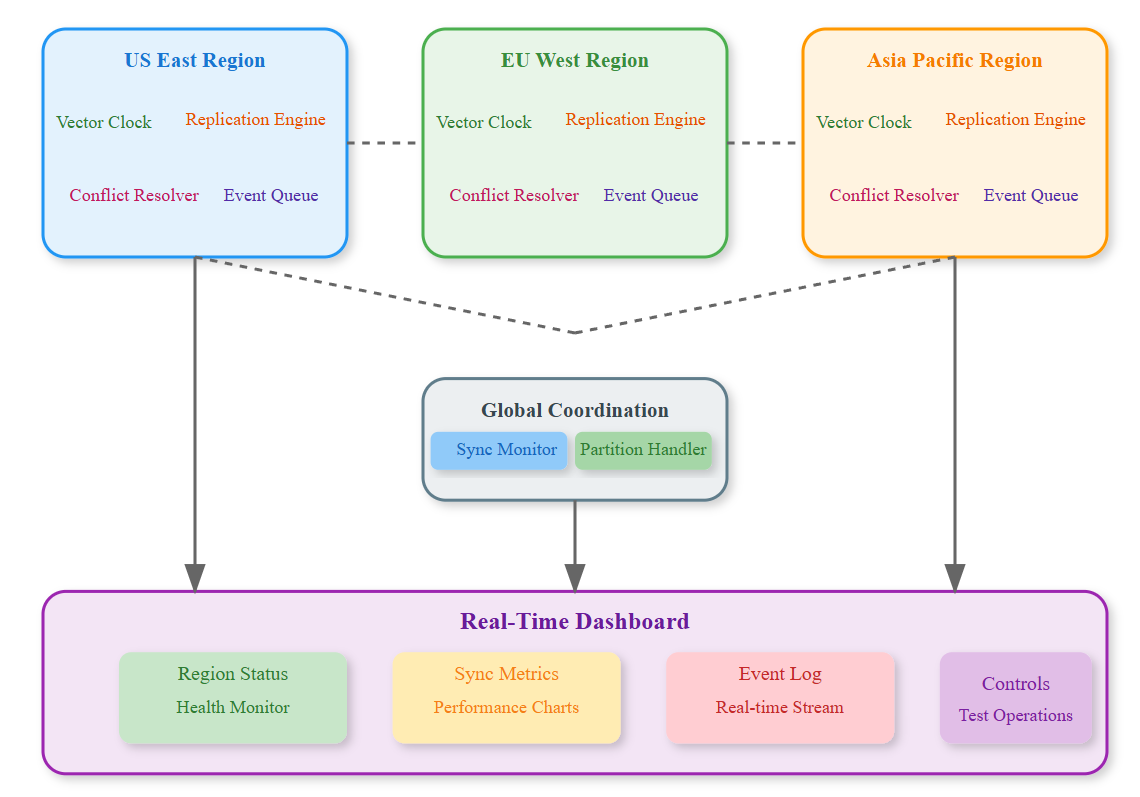Lesson 20: Cross-Region Synchronization - Building Global Twitter Architecture
What We're Building Today
Today we're tackling one of the most challenging aspects of global systems: keeping data synchronized across different continents while your users are actively tweeting, liking, and following each other. We'll implement:
Asynchronous replication between US, Europe, and Asia regions
Conflict resolution when users modify the same data simultaneously across regions
Network partition handling for when submarine cables get cut (yes, this actually happens)
Eventual consistency patterns that Twitter uses to serve 500M global users
By the end, you'll have a bulletproof synchronization system that handles real-world chaos gracefully.
Youtube Video
Core Concepts: The Art of Global Data Harmony
Asynchronous Replication: The WhatsApp Model
Think of how WhatsApp handles your message across countries. When you send a message in New York to someone in Tokyo, it doesn't wait for Tokyo to confirm receipt before showing you the green checkmark. Your message gets replicated asynchronously - fast locally, eventually globally.
Why Asynchronous Wins at Scale:
Synchronous: Wait for all regions → 300ms+ latency → User frustration
Asynchronous: Write locally → 50ms response → Replicate in background
The trade-off? Your Tokyo friend might see your message 500ms later, but you get instant feedback. For social media, user experience trumps perfect consistency.
Conflict Resolution: The Google Docs Strategy
Imagine two people editing the same Google Doc paragraph simultaneously from different countries. Google Docs doesn't crash - it merges changes intelligently. We'll implement similar conflict resolution using:
Vector clocks to track causality ("which edit happened first?")
Last-writer-wins for simple cases (profile updates)
Merge strategies for complex data (follower lists)
Network Partitions: The Submarine Cable Reality
Every year, ships accidentally cut submarine internet cables. When this happens, entire regions get isolated. Your system must continue working independently and reconcile data when connectivity returns. We call this "split-brain" recovery.
Context in Distributed Systems: Twitter's Global Challenge
Where This Fits in Our Twitter Architecture
Last lesson, we built Kafka for handling 100K messages/second within a single region. Now we're connecting multiple regions, each with their own Kafka clusters, databases, and user bases. This creates our global nervous system.
Current Week 2 Scale Target: 10,000 concurrent users across 3 regions
Real Twitter Scale: 500M users across 15+ global data centers
The Multi-Region Data Flow
When @elonmusk tweets from California, users in Japan should see it within seconds, not minutes. Our synchronization system ensures:
Local writes happen instantly (California users see the tweet immediately)
Cross-region replication happens in parallel (Japan gets the update asynchronously)
Conflict resolution handles edge cases (if someone tries to delete the tweet simultaneously)


